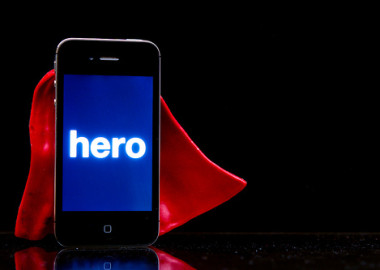
“If history were taught in the form of stories,” runs a line from Rudyard Kipling, “it would never be forgotten.” His thoughts were on capital-H History, but they hold just as true for companies. If corporate values — and the cultures that ensue — were taught in the form of stories, they too would never be forgotten. And when new hires and employees can remember values, and hold them close on a daily basis, they are empowered to make more accurate and beneficial decisions — and in turn to enjoy the sense of utility and peace that comes with organizational fit.
The onboarding of new hires shouldn’t begin in a boardroom with an HR PowerPoint. Actually, no relationship should begin in a boardroom with any kind of PowerPoint. Relationships, be they collegial or romantic, start with courtship, so that’s where the values conversations should begin as well. In a 2015 Harvard Business Review article, executive coach Michael Watkins counsels:
“Most managers focus on orienting the new hire to the business — strategy, formal structures — or explaining rules by going over the employee manual or sharing compliance regulations. All of that is important ‘but the focus should really be on culture and politics,’ Watkins says. And you shouldn’t wait until the employee’s first day to broach the subject. Effective onboarding starts during the recruiting and hiring phase — when you’re interviewing the potential hire and assessing fit.”
A road map to success
Noah Brier, the co-founder of tech company Percolate, offers a compelling road map to the enculturation process. Two key values he encourages are 1) to distribute decision-making and 2) to write it all down:
“For Brier, culture is how you make decisions, and the first exhibit of your culture is onboarding. ‘It shows your shared set of values and how they help people make decisions that are in the best interests of the company.’”
To that end, he created:
“a thorough onboarding program that’d get new people acquainted with the company and its culture as quickly as possible. Key here was writing everything down. Nothing scales better or faster than words. The average adult reads two to three times as fast as she listens. Plus, documentation is a ready resource, while people aren’t always available.”
We’ll return to Percolate, which offers the most comprehensive and thoughtful approach to onboarding I’ve yet encountered. But first, why bother?
Hiring is costly. Rehiring is costlier.
According to a 2012 meta-study of 30 case studies published between 1992 and 2007, rehiring can be expensive: “about one-fifth of an employee’s annual salary to replace that worker.” Another study, this one from 2008, pus the costs higher: “as high as 50%-60% of an employee’s annual salary, with total costs associated with turnover ranging from 90% to 200% of annual salary.” And points to secondary costs, as well: “A growing body of research links high turnover rates to shortfalls in organizational performance.…Likewise, reducing turnover rates has been shown to improve sales growth and workforce morale. In addition, high-performance HR practices (including reduction of dysfunctional turnover rates) increase firm profitability and market value.”
Case studies for success
So, how best to bring employees aboard? How to make sure you’ve found ideal candidates, ones who have not just the right skills but the complementary outlook and aligned values that will allow them to fit in, contribute meaningfully and remain in place for the long haul?
The key is for companies to know their values and share them with new hires in memorable ways. Pal’s Sudden Service is a Tennessee-based fast-food chain adored by management watchers for its exceptional employee retention. From another Harvard Business Review article:
“The end result of Pal’s commitment to hiring smart and teaching continuously is that employees show the same sense of loyalty as its customers. Turnover is absurdly low. In 33 years of operation, only seven general managers (the people who run individual locations) have left the company voluntarily. Seven! Annual turnover among assistant managers is 1.4 percent, vanishingly low for a field where people jump from company to company and often exit the industry altogether. Even among front-line employees, turnover is just one-third the industry average.”
How? Pal’s is crystal clear about its values: speed and accuracy. Every employee understands how central those values are, because at Pal’s, lifelong learning is built into every role. “New employees get 120 hours of training before they are allowed to work on their own, and must be certified in each of the specific jobs they do.” There are frequent pop quizzes, and even upper management is expected to spend 10 percent of their time teaching.
Starbucks is anther company renowned for its employee training program, and for instilling its corporate values in every new hire, leading to industry-beating retention rates. That commitment extends to education as well, to a remarkable degree: for eligible employees (about 70 percent of their workforce in the States), Starbucks will pay for four years of university. According to one article about the program:
“The $250 million investment works out to $10,000 for each of those 25,0000 Starbucks ‘partners’.…No publicly traded company — even a socially conscious one like Starbucks — spends $250 million just to be nice. The college program offers a wonderful opportunity to Starbucks employees, but it also ties them to the company for the length of their education. That’s a strong mutual benefit in which the worker gets a college degree for free and Starbucks holds on to an employee for at least four years.”
As I said, Percolate has the Cadillac of onboarding environments. Do yourself a favour and read the nuts and bolts in Firstround.com’s snapshot. Storytelling is baked into every leg of the process, including such nontraditional forms as Google Doc archived chats, gift baskets and a free Kindle to encourage lifelong learning. Everything is geared to a closer intimacy of people and cherished beliefs:
“From an intriguing ‘Introduce Yourself’ email to a well-designed new desk to the ‘Day One’ document, Brier has made sure his new hires’ first impressions are impactful ones.…’Plan for the employees you’ve not yet hired just as much as much as you’re planning for your current team. They may not know their onboarding has started, but you must.’”
Due diligence aside, the hiring decision is a risk on both sides of the desk. Managers have allocated precious resources and entrusted the value of their brand in relative strangers. And for the new hires, it’s a big step into the unknown and — if everyone has done their job correctly – the beginning of a long and fruitful relationship.








